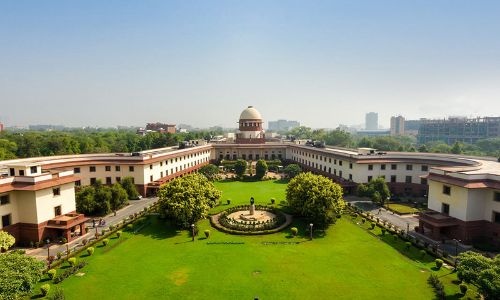This article is written by Ms, Aporva Shekhar from KIIT School of law. This article is a brief analysis of the issue of backlog of cases due to the pandemic.
Table of Contents
Introduction
The judiciary was already overburdened with pending cases before the pandemic started and now even more so. The Covid-19 crisis has forced the judiciary to intervene in many time-sensitive cases related to pandemic management and public health which has created even more of a backlog of pending cases. The Bombay High Court judge, J G S Patel, expressed concern regarding the judiciary’s response towards cases that were overlooked due to the ongoing crisis. He exclaimed that how long could they tell people that their case was not important enough to be heard during the Covid-19 crisis. Access to justice is a fundamental right and due to the ongoing crisis, this right might be getting hampered due to existing court policies and parameters that were formulated to deal with the crisis.
Cause of the backlog
Before Covid-19 the Indian judicial system was already preparing to digitize its operations and the development of the e-court services app and the e-courts were a part of that effort. But even with such revolutionary developments, the courts have failed to address the issues of many people due to the gravity of the crisis faced by the country. In situations where the executive failed to perform its intended role, the judiciary had to step in to fill its shoes. Through judicial activism, the judiciary sought to intervene in matters requiring immediate action, like the supply of essential commodities. The Supreme Court took suo moto cognizance and adjudicated in the case of In Re: Distribution of essential supplies and services during pandemic 2021 to solve a time-sensitive problem. And while the judicial activism of Indian courts was lauded all around the globe, this was also the reason why many other cases got delayed. The current infrastructure for hearings is focused on the suit’s characteristics, the cases that require debates get postponed and the district courts take up simpler cases first.
Change in courts’ working hours
The pandemic has altered every aspect of society, and the working of the courts are no exception. In order to contain the spread of the virus, the courts had to shift their operation to a digital platform. This shift from the normal working conditions also created a change in the workload of the courts. The working hours were also significantly altered and in a situation where there was a limited amount of time the courts focused more on priority cases and postponed the rest. The change in the working hours is one of the reasons why several cases are being deemed less time-sensitive by the courts and hence are being postponed. The backlog only extends with time as the paucity of time and operating conditions are forcing courts to take up time-sensitive cases, which are mostly the new ones that are filed amid the pandemic concerning essential supplies or public healthcare services that needed immediate attention. Bail proceedings, the succession of estates and other such regular cases were deemed to be not as time-sensitive and hence were postponed.
Judicial infrastructure
The judiciary has responded rapidly to the pandemic and streamlined its digitization process, which was a significant positive development that was lauded by many. But India is still a country where internet connection is a luxury for many, the rural and semi-urban population who are not familiar with technology have struggled due to this new development. Lawyers from areas with intermittent or total lack of connectivity are unable to present their cases, and there is no recourse left since courts stopped operating physically due to the pandemic. Due to the digitization of proceedings, several cases go unheard or are postponed to a prospective date. The swift change from physical courts to the digital platform has left several advocates struggling too. People who had less urgent cases now have to wait even longer to have their pleas heard, the judiciary that is already overburdened will now become even more so because of the pandemic.
Basis of case priority and tracking
Another important reason for the delay is how the cases are tracked in courts, the administrative system tracks them on the basis of their assignment to courts. The district courts take up cases that require simple resolutions and the cases that need hearings and arguments are postponed to a later date. This system of postponement for argumentative cases results in the overall number of resolved cases unchanged with new ones piling on. The roster for cases also gives priority to the newly filed cases while the older ones are pushed further down on the list of priority. The system itself places more emphasis on the hearing of new cases days within they are filed, and considering the pandemic situation, all cases related to pandemic management and public health automatically gained precedence over other civil matters leading to them being delayed even more.
Effect of the backlog
The precautionary restrictions imposed are there to contain the spread of the coronavirus and the judiciary is also working within those restrictions. But e-courts are not accessible by all as lawyers who reside in areas with less to no connectivity cannot appear for their cases. Another possible issue that concerned legal professionals around the country was that the delay in the hearing of the cases would give malefactors ample opportunity to tamper with the evidence. This issue is not a new one and it had plagued the legal system long before the pandemic even started, but the pandemic brought with it more delays and this extra time could be misappropriated by miscreants to tip the scales in their favour. Consequently, another side effect of the delay is that people in police custody that have a pending bail proceeding would have to spend longer as their case goes unheard due to the ongoing crisis. The postponement of non-urgent cases to adjudicate more urgent ones are leading to even more of a backlog and delays in justice. And the effects will only amplify and create further delays when the courts start functioning normally again as the existing gives more importance to new cases that are filed. So when the courts do reopen the influx of newly filed cases will further create delays as new cases appear first on the roster followed by notice cases and then the old ones. The courts consider the older cases after hearing the new ones, and this might result in more delays.
Possible strategies for judicial sector response
The issue of delayed justice is a recurring problem that the Indian courts face and this issue has only become more severe with the effect of lockdowns and the pandemic crisis. The effect of the backlog is also felt differently with certain categories of people disproportionately being affected by it. Equal access to justice is the mandate of law and it is said that justice delayed is justice denied. While the restrictive pandemic protocols aim to protect the masses from the virus the negative effects of the same are manifold. But there are several ways that the judicial sector can try to counter these negative effects in order to give everyone equal access to justice and ensure speedy and efficient discharge of cases.
Establishing continuity plans for the judicial sector
The digitization projects that were streamlined due to the pandemic should be developed further. The e-platforms should pose a hindrance to equal access to justice, and therefore, to ensure that people all over the country can access e-platforms, the judicial sector should rethink its approach to accommodate all sections of people in the country. The pandemic provides an opportunity for the justice system to revamp it entirely to bring about efficiency to attack the problem of backlogs. This could include improving the existing communication and information technology systems. Another change that could potentially improve the situation would be digitizing the case management system entirely along with prison management systems in order to accurately assess the priority of cases in a lesser amount of time and more efficiently.
Establishing the criterion for prioritization of cases
The judiciary needs to establish a more elaborate criterion for determining the priority of cases without compromising on the rights of parties to seek justice. For example, crimes against children and by children should be prioritised more and in the case of the latter detention should be the last resort considering the condition of overpopulated correctional facilities which might become even more prejudicial in this pandemic situation. Violence against women and children should be given the most priority as such people are usually dependents and are often trapped with their abusers, and due to the lockdown and pandemic the cases, both reported and unreported have increased manifold. Violence against women and girls has been dubbed as the shadow pandemic, owing to the increase in violence and abuse owing to the Covid-19 pandemic according to UN sources The priority of cases should also be determined on the basis of accountability of crimes where they might be affected due to statute of limitations.
More emphasis should also be placed on the cases of people who have been disproportionately affected by the emergency measure and limitations. The focus of the judicial sector should be on developing procedures to facilitate the prioritization of cases that involve subject matter of non-derogable rights like human and fundamental rights. This needs to be done to ensure that a delay or postponement of a case does not deny the victims the justice they seek. The determination of priority should be free from external influence, mindful of the right to trial and non-discriminatory in nature. Additionally, the courts should use their discretion to provide interim relief in the form of temporary injunctions, procedural guarantees, restraining orders and other forms of resolutions based on summary proceedings.
Provision of personal protective equipment for law enforcement and judicial officers
E-court services are a positive development but in a country like India, it might deny access to justice for certain classes of people who lack proper technical knowledge and internet connectivity. So e-court services cannot be the only solution, instead, they should be developed in conjunction with physical courts. In order to open courts physically again, all involved personnel should be provided PPE to prevent the spread of disease. Police officers, court clerks, judges and advocates and all others provide an essential service that has been enshrined in our constitution. Along with frontline workers, the people in the judicial sector need PPE to open physical courts again.
Promoting restorative justice services
The pandemic provides an opportunity for the judicial sector to promote alternative dispute resolutions and restorative justice services. Processes like mediation and conciliation can prove beneficial to deal with cases involving family disputes or any other civil dispute which might not be prioritized by the courts in a crisis. It has been established that courts are overburdened with cases and due to the paucity of time sometimes may postpone less urgent cases in favour of ones that require immediate attention. But with mediation and other alternative dispute remedies, the cases can be resolved outside courts which might reduce the burdens of courts significantly. Even with online proceedings, the judicial system is buckling under the pressure of new cases being filed every day but restorative justice services can reduce some of that pressure by resolving issues without the need for hearings. In the current situation, a mandatory mediation or alternate dispute resolution would be educational and beneficial for the people, as not many know about such services and spend a lot of time, effort and money waiting for their cases to be resolved by overburdened courts.
Conclusion
The judicial system has been dealing with its own issues with reference to the lack of judges and backlogs that have prevented the system from working more efficiently. And the pandemic has only added salt to the wounds, the judiciary had to step up and take many different roles during the pandemic to ensure the public’s welfare where the executive failed to do so. But even with these best intentions and with the interest of the public in mind, the judiciary has to face yet another issue created and exacerbated by the pandemic. With the constant influx of newer cases, the judiciary has been forced to pick and choose based on their urgency which has left several others disgruntled.
References
- https://www.livelaw.in/news-updates/justice-gautam-patel-covid-justice-courts-vidhi-centre-for-legal-policy-176531
- https://www.indiatoday.in/india-today-insight/story/justice-in-the-time-of-covid-19-1662330-2020-04-01
- https://scroll.in/article/998458/indias-huge-backlog-of-court-cases-is-a-disgrace-but-covid-19-has-provided-solutions
- https://www.thehindu.com/news/national/brevity-key-to-future-of-legal-process-justice-kaul/article35226064.ece
- https://www.bloombergquint.com/coronavirus-outbreak/covid-19-and-the-indian-supreme-court
- https://www.iacajournal.org/articles/10.36745/ijca.391/
LawSikho has created a telegram group for exchanging legal knowledge, referrals, and various opportunities. You can click on this link and join:
 Serato DJ Crack 2025Serato DJ PRO Crack
Serato DJ Crack 2025Serato DJ PRO Crack











 Allow notifications
Allow notifications



